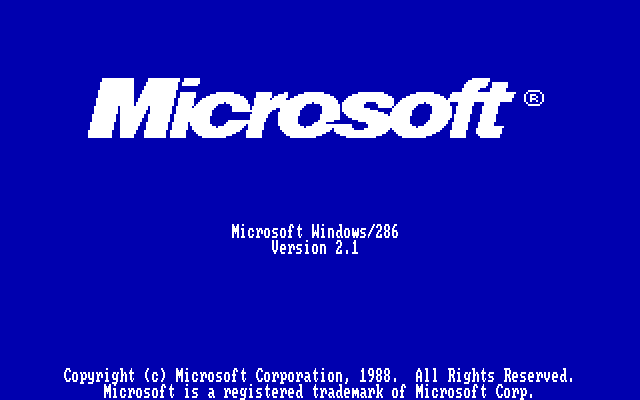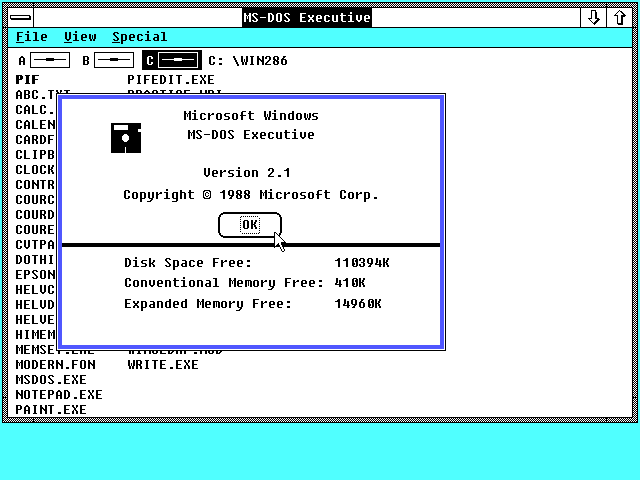Windows 2.x Windows 286
Windows 2 changes from Windows 1.x consist mainly of visual improvements. Windows 2 adds overlapping windows, menu keyboard shortcuts, VGA support, and other user interface changes influenced by IBM standards. Windows 2 is the last version that supports installation to a floppy disk, and to be available as an application run-time. Later editions of Windows 2 added support for 286 high memory, and running applications in a 386 VDM. The versioning is a little confusing. 2.x and 2.x/386 were released side-by-side. When it reached 2.1x, the regular 8088 version was renamed to Windows 2.1x/286. This is all unified in Windows 3.0.
For a brief time during the Windows 2.x era, Microsoft considered dropping Windows in favor of OS/2. After a fallout between Microsoft and IBM, development refocused on Windows 3.0 and what would become Windows NT.
Wanted: Supposedly, Microsoft had a beta program manager and file manager for Windows 2 downloadable from their BBS.
Other Windows Versions:
| 1.0 | 2.x | 3.x | NT 3.x | 95 | NT 4.0 | 98 | 2000 | ME | All |
Screenshots
Release notes
Windows 2.1 came out less than a year after the initial 2.0 release and was released in two variants for the Intel 286 and Intel 386. The variant for the 16-bit 80286 utilized the HIMEM.SYS driver to gain access to the High Memory Area freeing up valuable conventional memory, along with any extended memory board space available. It will otherwise run fine on older 8088/8086 hardware despite the name (just without HMA usage).
Installation instructions
Windows/286 requires an existing installation of MS-DOS 3.30 or higher.
Under DOS 5.0 or later, make sure there is a SETVER entry for "WIN200.BIN" to report DOS version "3.40".
Note: MS-DOS 5.0 or higher already uses the HMA. Windows 286 will still run, but its memory saving trick is negated.

